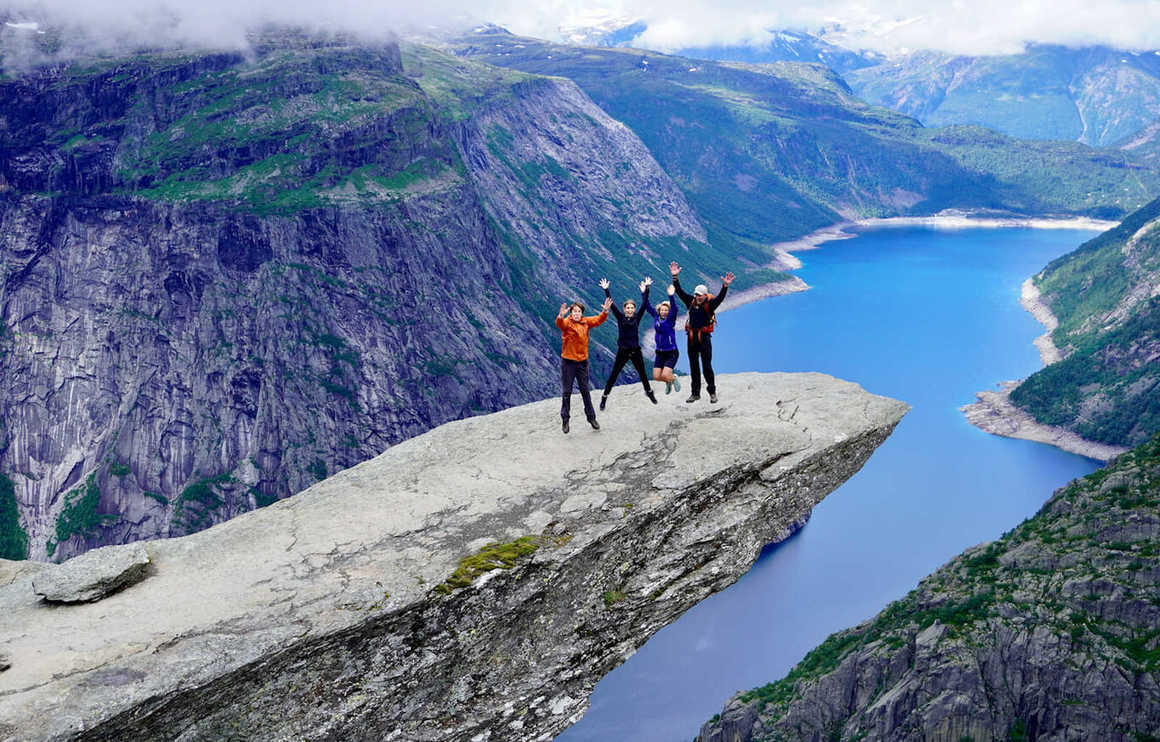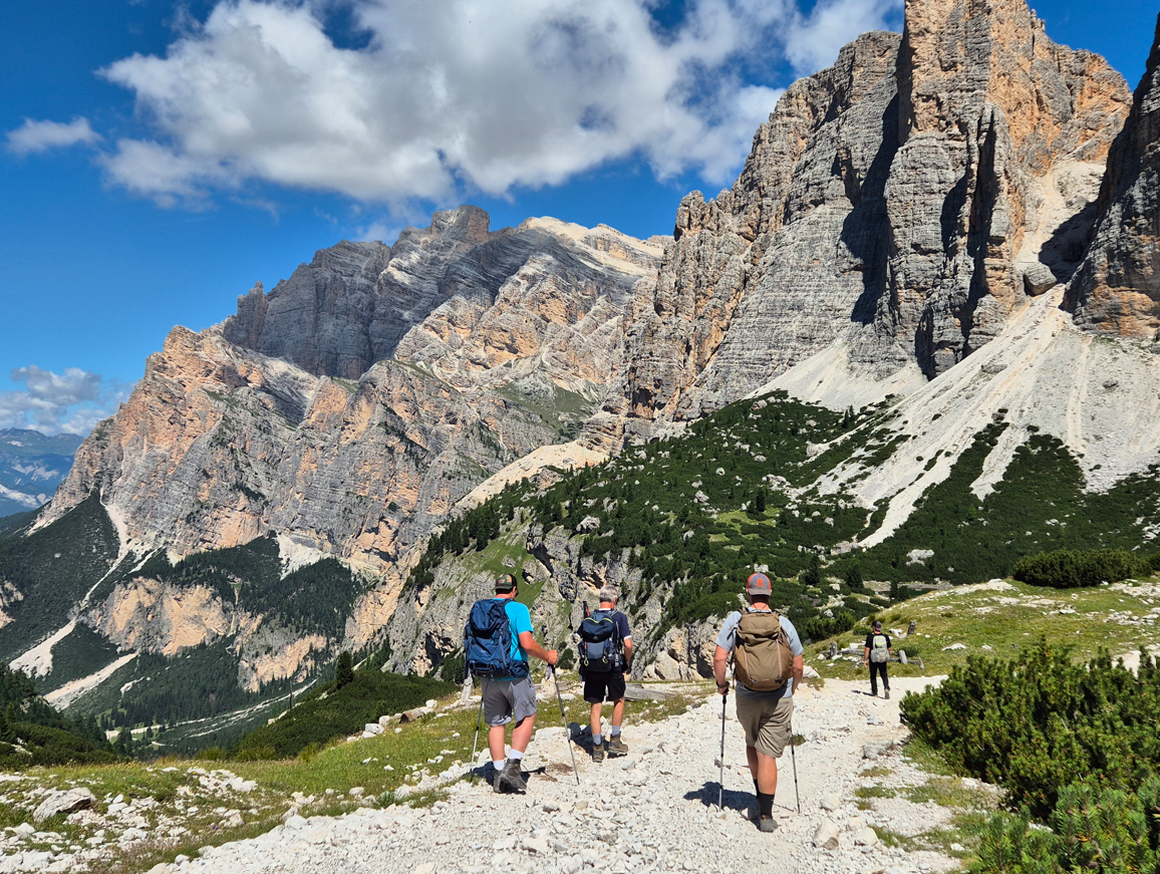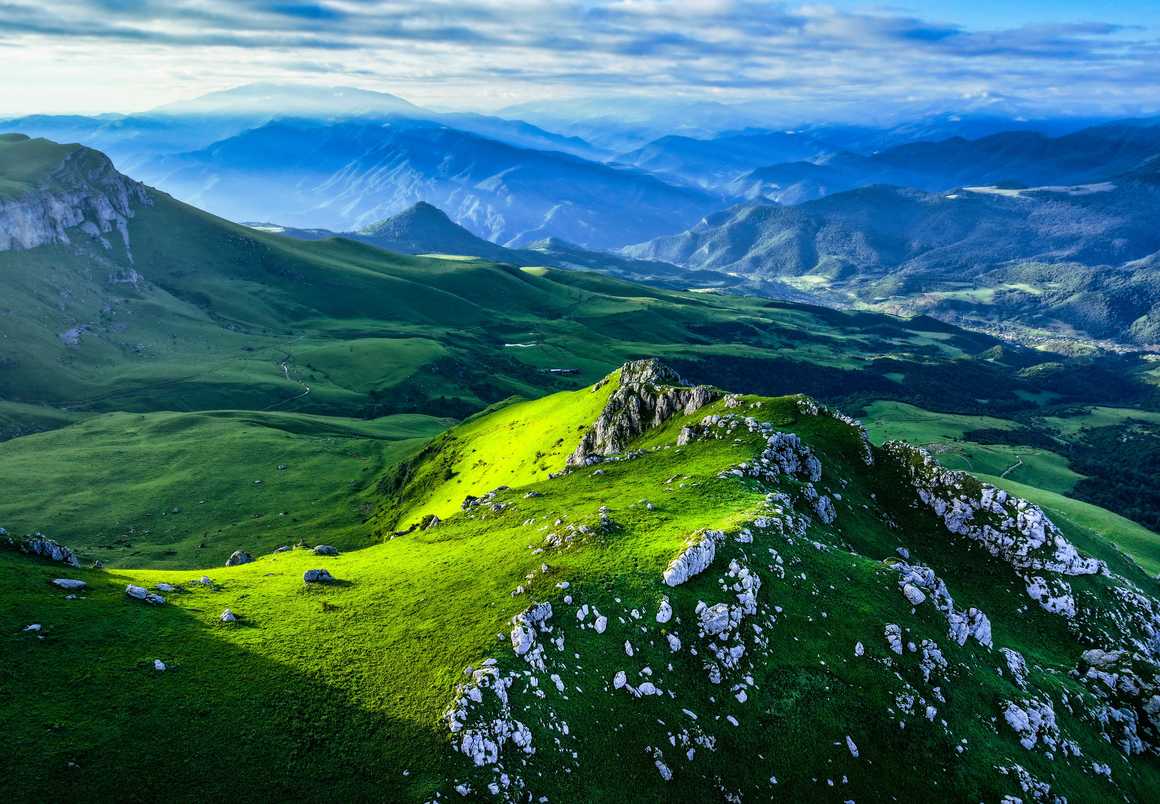Adventure Travel Itineraries Europe
Fortunately, we at Kandoo Adventures are adventure travel
experts, operating small group trips to some of the most iconic natural
landscapes around the world and we know lots about planning trips to Europe, the
best places to travel in Europe and Europe travel packages.
With that being said, there are several important factors to
consider when creating your dream Europe travel trip. Read on for our guide on
planning the best Europe travel itinerary and what to look for when booking
with an online adventure travel company like Kandoo.
Where is Europe?
On a map you’ll find Europe’s northernmost point is the Svalbard
archipelago of Norway, and the continent reaches as far south as the
islands of Greece and Malta. From west to east, its landmass extends from the island
nation of Iceland in the west to the Ural Mountains of Russia in the
east.

How Many Countries are in Europe?
Europe can be divided into four subregions: Eastern Europe,
Western Europe, Northern Europe and Southern Europe.
Eastern Europe is the largest and most populous subregion in
Europe, with approximately 285 million people. It consists of 10
countries stretching from the western borders of Poland, the Czech Republic,
Slovakia, Hungary, Romania and Bulgaria to the Ural Mountains of Russia to the
east.
Western Europe consists of 9 countries and has a total
population of about 200 million. Germany is the most populous country in
Western Europe, with a population of approximately 84 million, while
France has a population of about 67 million. Other countries of Western
Europe include the Netherlands, Belgium and Luxembourg.
Northern Europe consists of 10 countries. It has a
population of about 109 million, making it the least populous of the
subregions of Europe. More than half of this population resides in the United
Kingdom, where we’re based! Other countries of Northern Europe include the Scandinavian
countries of Norway, Sweden and Denmark, Finland, the Baltic States of Estonia,
Latvia and Lithuania, Ireland, and Iceland.
Southern Europe is home to 15 countries with a combined
population of approximately 151 million people. The most populous
country in Southern Europe is Italy, which has more than 59 million people living within its borders, and not too far behind is Spain with a
population of about 48 million.
What Time is it in Europe?
From west to east the time zones are Western European Time
(WET) which is UTC+0, Central European Time (CET) which is UTC+1, Eastern
European Time (EET) which is UTC+2 and Further-Eastern European Time (FET)
which is UTC+3. Western European Time is the same as Greenwich Mean Time (GMT),
however during periods when Daylight Saving Time is in use, Western European
Summer Time is one hour ahead of Greenwich Mean Time.
In Europe, Daylight Saving Time is commonly referred to as
Summer Time. Summer Time begins at 1:00am UTC on the last Sunday in March. On
the last Sunday in October areas on Summer Time (Daylight Saving Time) return
to Standard Time at 1:00am UTC.
The names and abbreviations frequently used to indicate the
current local time in each time zone change along with Summer Time. Western
European Time (WET) becomes Western European Summer Time (WEST), Central
European Time (CET) becomes Central European Summer Time (CEST), Eastern
European Time (EET) becomes Eastern European Summer Time (EEST) and
Further-Eastern European Time (FET) become Further-Eastern European Time
(FEST).
Throughout the United Kingdom in the countries of England,
Northern Ireland, Scotland and Wales, Summer Time is referred to as British
Summer Time (BST). Iceland and portions of Greenland do not observe daylight
saving time.
Are you still with us? Basically, if you need to find the
time of a particular country at any given time, just Google it!
What are the Climate Regions in Europe?
The Nordic climate extends over Scandinavia, including
Iceland. Countries in this climate zone experience humid, cold winters and
mild, humid summers.
The Continental climate covers the central and eastern part
of Europe. It is categorised by cold, long-lasting winters and predominantly
hot winters.
The Oceanic climate covers the countries and regions which
are influenced by the Atlantic Ocean, North Sea and Baltic Sea. This climate
usually has mild, wet winters and cool, humid summers.
Finally, the Mediterranean climate is experienced in
countries around the Mediterranean Sea like Spain, Portugal, Southern France,
Italy, Greece and Turkey. These countries typically face hot, dry summers and
mild winters with hardly any frost.

Planning an Adventure Travel Holiday in Europe
Ask yourself, are there any destinations or activities that
you’d like to tick off your bucket list? For example, catching a glimpse of
the Northern Lights in the Arctic Circle, dogsledding in Finland, kayaking
in the Lofoten Islands of Norway or trekking iconic routes like the Tour
Du Mont Blanc beneath the tallest summit in France or the famous Cinque
Torri Path in the Dolomites of Italy.
Next, you should gather a ballpark estimate of how long you
want to be away for. There are plenty of Europe travel itineraries and Europe
travel package deals that are suitable for Europe trips of 1 week up to 1 month,
so it really depends on where you want to travel in Europe, what you want to
see and your personal holiday leave allowance.
By deciding on the duration of your Europe trip, you should
be able to set a budget. Typical costs you should factor into your budget when
travelling Europe include costs for flights, accommodation, meals and dining
out, entrance fees for attractions, souvenirs and shopping, currency exchange
fees and visa fees depending on where you are travelling to and from.
Lastly, when planning a Europe travel trip, you’ll need to
consider the weather and climate, and when the best time to travel to your
chosen destination is. Check out our Armenia Travel Guide, Finland
Travel Guide, France Travel Guide, Georgia Travel Guide, Greenland
Travel Guide, Iceland Travel Guide, Italy Travel Guide, Norway
Travel Guide and Svalbard Travel Guide for more information on the best
places in Europe to travel by the time of year.
Booking an Adventure Travel Holiday
The most important factor to consider when planning a trip
to Europe is finding the right adventure travel company for you. Our helpful
guide on how to choose the right adventure travel company provides you
with all the information you need on how to recognise the best tour operators
and what to look for when booking adventure travel online.
A question we get asked a lot at Kandoo Adventures HQ is how
far in advance do you need to book a holiday. There are a number of factors
that affect the answer to this question such as the type of trip you want to
book, the kind of activities you’ll be doing and where exactly you want to
visit. One factor to consider when planning your Europe trip is how challenging
your chosen adventure is. We have given each of our trips a difficulty rating
based on their level of challenge, which should give you an idea of how far in
advance to book your trip, leaving ample time to train.
In terms of booking in advance for our easy trips, dates are
available for up to 2 years in advance, so you can book early and give yourself
plenty of time to get excited or you can leave it until 2-3 months before. Moderately
challenging trips ideally need booking at least 6-12 months in advance,
depending on your fitness level. When planning an awesome adventure such as
hiking in the Dolomites, or trekking through the French Alps, you want to be
able to enjoy every moment and preparing appropriately is vital.
Entry Requirements for Travel in Europe
Starting in 2025, US passport holders will need to apply for
authorisation through the European Travel Information and Authorisation System
(ETIAS). ETIAS travel authorisation is an entry requirement for visa-exempt
nationals travelling to any of the 30 European countries listed here. In
a nutshell, with a valid ETIAS travel authorisation, you can enter the
territory of these European countries as often as you want for short-term stays,
normally for up to 90 days in any 180-day period.
You can fill out the application form using either the
official ETIAS website or the ETIAS mobile application. Applying for the
ETIAS travel authorisation costs €7, though some travellers are exempt from
paying this fee. Most applications are processed within minutes. You will
receive an email confirming the submission of your application which will
include your unique ETIAS application number: make sure you keep this number
for future reference.
Our recommended Europe Travel Itineraries:
1 Week Europe Travel Itinerary

Discover the serene landscapes of Finland, exploring one of
the most stunning and isolated parts of Europe by foot, sled and snowmobile.
Head out into the wild Taiga driving your own dog sled, embark on a thrilling
snow mobile safari in the heart of the Hossa National Park, try your hand at
ice fishing and catch a glimpse of the northern lights on this epic 8-day
Europe travel itinerary.
Trek the classic Alpine circuit of Mont Blanc and discover
the French, Italian and Swiss Alps in one spectacular Europe travel trip. Wind
between mountain pastures, glaciers and peaks, cross high mountain passes and
lush valleys and stay in traditional gites and refuges on this truly
incomparable 8-day trekking route around the top of Western Europe.
Adventure deep into the frozen north, beneath the glow of
the northern lights and the gentle creaking of icebergs on this 8-day Europe
trip. Immerse yourself in traditional Inuit culture amongst the local settlers
of Oqaatsut, embark on a mini pulking expedition either by ski or snowshoe and
catch a glimpse of the northern lights dancing across Greenland’s dark skies.
Experience the very best of Europe adventure travel in the
iconic Dolomites and create memories for a lifetime on this spectacular journey
through mountainous northern Italy. Walk the famous Cinque Torri Path, reach
the summit of Lagazuoi (2835m) and gaze up at the vast north face of Cima
Grande. Don’t forget to snap some photos to capture the beauty of the Dolomites
at every turn!
Traverse the southern part of the Lofoten Islands of Norway,
exploring the most mountainous and spectacular parts of the archipelago.
Discover some of the most stunning treks in the Lofoten Islands, stay a
traditional Rorbu or Sjøhus and learn about the rich diversity of fauna and
flora of the Lofoten Islands on this 1-week Europe trip itinerary.
2 Week Europe Travel Itinerary

For a slightly longer Europe trip, join us on the
picturesque route of the little-known Transcaucasian Trail. On this 2-week
adventure, you will visit ancient monasteries standing proud along the trail,
cross from Armenia to Georgia, taking in the incredible culture of both
countries and relax your tired muscles in the soothing waters of the Tbilisi
Sulphur Baths.
Our Ultimate Iceland trip uses the famous Route No1 to circle
the entire island over 15 days, offering our customers the ultimate Europe
adventure travel experience. Travel the famous Route No1, gaze up at the
astonishing falls of Goðafoss, visit the remote Vestmann Islands and Westfjords
and hike to the foot of Europe’s largest glacier in one epic adventure.
1 Month Europe Travel Itinerary
The Kandoo Ultimate Collection’s Europe travel
packages allow you to make the most of your time away by seeing and doing it
all in one go. Included in this range of unique experiences are several longer
trips of up to 3-weeks in some of our other destinations around the world
including the Ultimate Tanzania trip, the Ultimate Nepal trip and
the Ultimate Indonesia trip. If you want to make the most of your trip
and set foot in every corner, these adventures are just what you’re looking
for.











